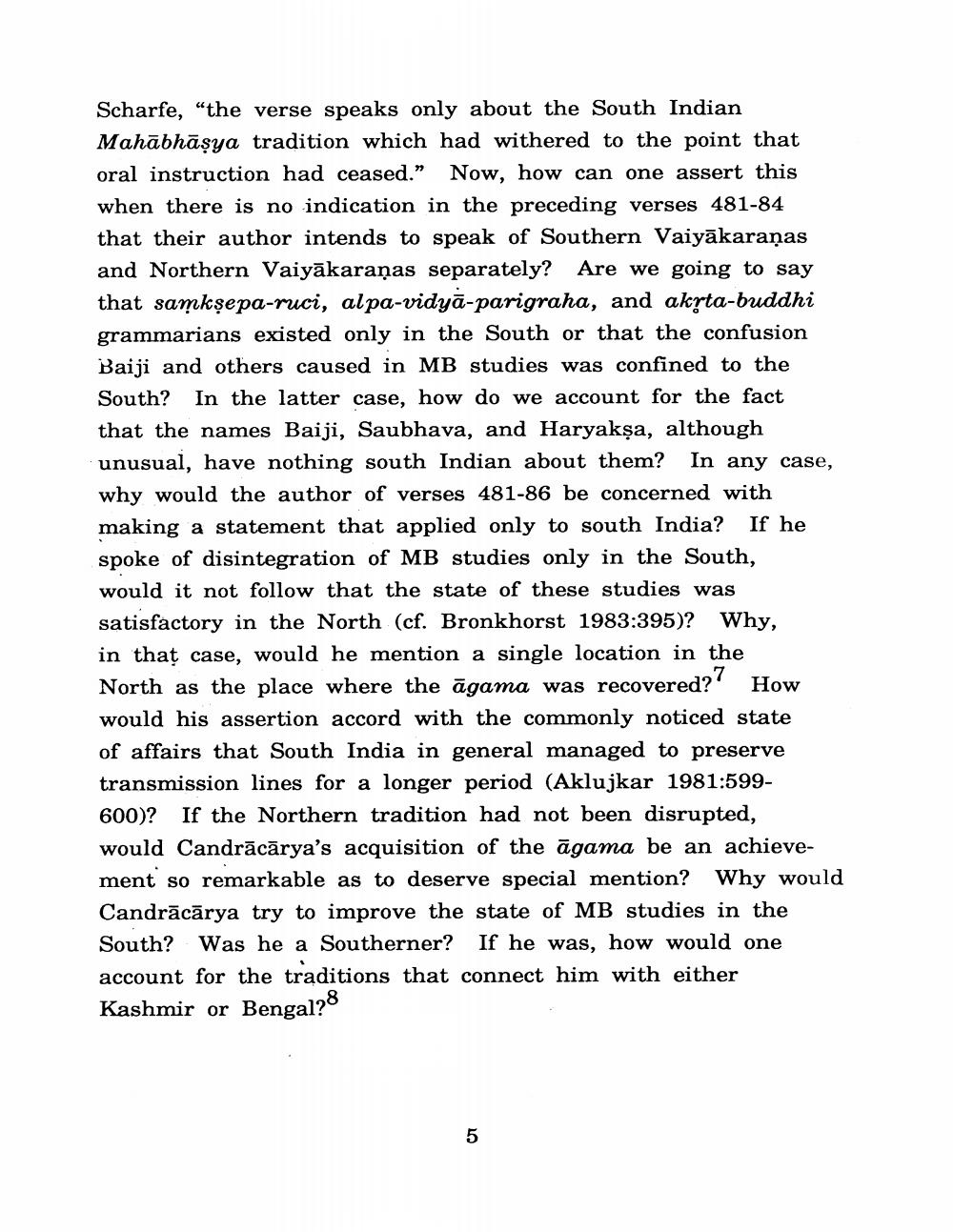Book Title: Paninian Studies Author(s): Ashok Aklujkar Publisher: Ashok Aklujkar View full book textPage 5
________________ If he Scharfe, "the verse speaks only about the South Indian Mahābhāṣya tradition which had withered to the point that oral instruction had ceased." Now, how can one assert this when there is no indication in the preceding verses 481-84 that their author intends to speak of Southern Vaiyākaraṇas and Northern Vaiyākaraṇas separately? Are we going to say that samkṣepa-ruci, alpa-vidya-parigraha, and akṛta-buddhi grammarians existed only in the South or that the confusion Baiji and others caused in MB studies was confined to the South? In the latter case, how do we account for the fact that the names Baiji, Saubhava, and Haryakṣa, although unusual, have nothing south Indian about them? In any case, why would the author of verses 481-86 be concerned with making a statement that applied only to south India? spoke of disintegration of MB studies only in the South, would it not follow that the state of these studies was satisfactory in the North (cf. Bronkhorst 1983:395)? Why, in that case, would he mention a single location in the North as the place where the agama was recovered?" How would his assertion accord with the commonly noticed state of affairs that South India in general managed to preserve transmission lines for a longer period (Aklujkar 1981:599600)? If the Northern tradition had not been disrupted, would Candrācārya's acquisition of the agama be an achievement so remarkable as to deserve special mention? Why would Candrācārya try to improve the state of MB studies in the South? Was he a Southerner? If he was, how would one account for the traditions that connect him with either Kashmir or 7 Bengal?8 5Page Navigation
1 ... 3 4 5 6 7 8 9 10 11 12 13 14 15 16 17 18 19 20 21 22 23 24 25 26 27 28 29 30 31 32 33 34 35 36 37 38 39 40 41 42 43 44 45 46 47
